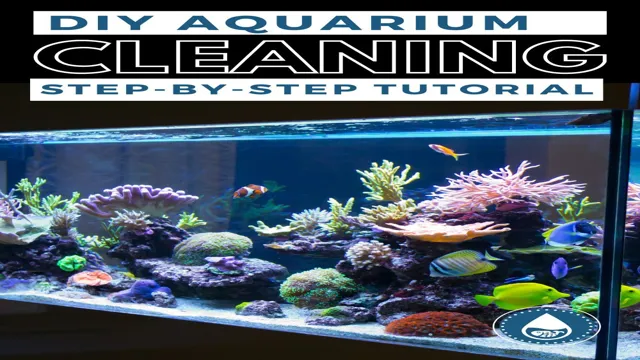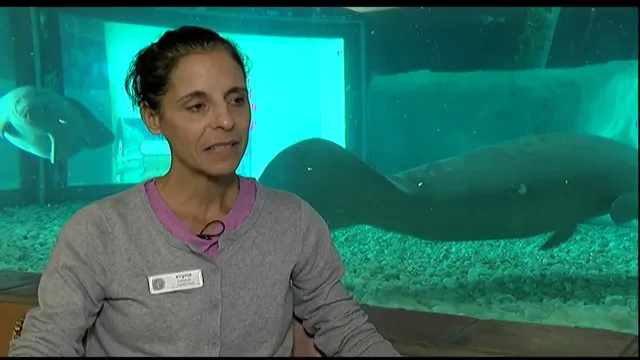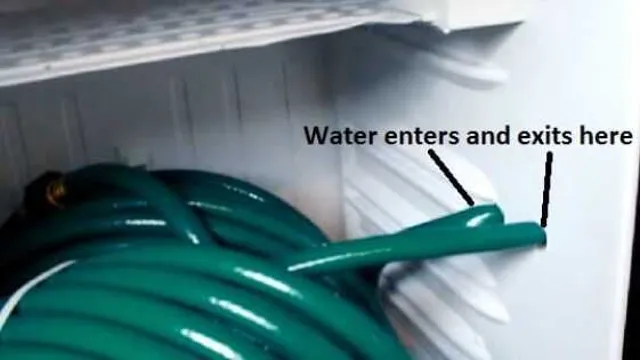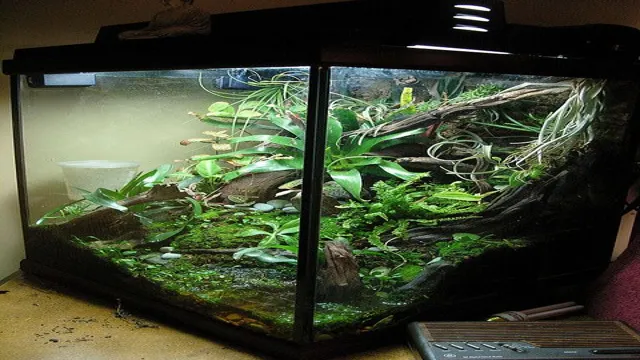Do you love taking care of your aquarium but worry about the harmful effects of chlorine on your fish and aquatic plants? If so, you’re not alone. Chlorine is a common chemical found in tap water that, while keeping it safe for humans, can be extremely harmful to your aquarium’s ecosystem. Luckily, there are a few simple and effective ways to remove chlorine from your aquarium water and ensure a healthy environment for your aquatic creatures.
In this blog post, we’ll explore the different methods you can use to remove chlorine from your aquarium and keep your fish and aquatic plants thriving. So, let’s dive in!
Understanding Chlorine in Tap Water
If you’re looking to create a thriving aquarium, it’s essential to understand the impact of chlorine in tap water. While it’s used to disinfect our water supply, chlorine can have harmful effects on your aquatic inhabitants. Luckily, there are a few methods for getting rid of it before adding it to your tank.
One straightforward option is to let the water sit out in an uncovered container for 24 hours. This allows the chlorine to evaporate naturally. Alternatively, you can use a dechlorinator solution, which neutralizes the chlorine.
Whichever method you choose, be sure to test the water regularly to ensure it’s safe for your fish, plants, and other inhabitants. Don’t let chlorine stand in the way of your dream aquarium – take action to keep your water clean and healthy for all your aquatic friends.
Chlorine as a Water Disinfectant
Chlorine is a commonly used water disinfectant that is quietly working to keep our tap water safe. It is added to water to destroy harmful microorganisms and bacteria. While chlorine is effective at purifying water, its presence can also affect the taste and odor of the water.
Those who are sensitive to the smell or taste of chlorine may find it unpleasant. Some may even wonder if its presence could be harmful to them. Fortunately, the amount of chlorine used in tap water is carefully monitored and controlled to ensure that it is safe for consumption.
If you are concerned about the levels of chlorine in your tap water, there are options to remove it, such as using a water filtration pitcher or installing a filter on your faucet. Overall, while chlorine may have its drawbacks, it plays an important role in keeping our tap water clean and safe for us to drink.
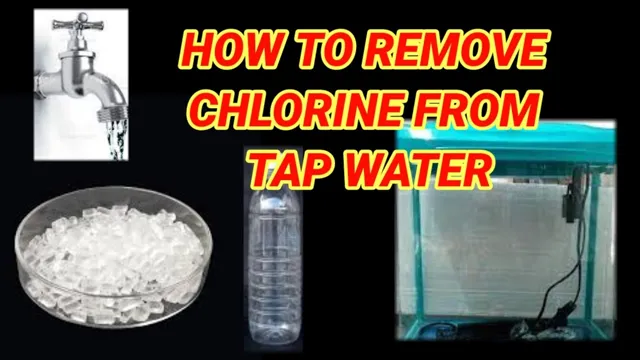
Negative Impact of Chlorine on Aquarium Fish
Chlorine is commonly found in tap water that we use to fill our aquariums. This chemical compound is helpful in keeping our drinking water free from harmful bacteria and other contaminants. However, when it comes to our aquarium fish, chlorine can have a negative impact.
When chlorine is added to the aquarium water, it can damage the gills of fish, making it difficult for them to breathe. This can result in stress, illness, and even death. As aquarium owners, it’s essential to understand the effects of chlorine on our fish.
One way to prevent chlorine from being harmful to your aquarium is to use a water conditioner before adding the tap water. A water conditioner is a chemical solution that neutralizes chlorine and other harmful chemicals present in tap water. By taking this simple step, you can ensure that your aquarium fish have a safe and healthy environment to live in.
Methods to Remove Chlorine from Water
If you’re looking for ways to remove chlorine from water for your aquarium, you have a variety of options available to you. One method is to use activated carbon, which is able to adsorb chlorine and other chemicals from water. Another option is to use a chemical filter, which typically contains a reducing agent that converts chlorine into its chloride form, making it safe for fish. (See Also: How to Assemble an Aquarium Tank: A Step-by-Step Guide for Beginners)
You could also try adding a dechlorinator to your aquarium water, which works by neutralizing chlorine and other chemicals that can harm fish and other aquatic life. Ultimately, it’s important to find a method that works best for your situation and to ensure that your aquarium water is free from harmful chemicals before adding fish or other aquatic life. By taking the time to remove chlorine from your aquarium water, you can help ensure the well-being of your aquatic pets and create a healthy environment for them to thrive in.
Allowing Water to Sit for 24 hours
If you find yourself with a glass of tap water that has a strong chlorine taste or smell, there are a few methods to remove the chlorine that won’t require purchasing any special equipment. One of the easiest methods is simply allowing the water to sit for 24 hours. Chlorine is a gas, so it will dissipate from the water over time, leaving it chlorine-free.
While this might not be the most efficient method, it gives you the option to remove the chlorine without having to spend any money or expose yourself to any harmful chemicals. Just make sure to cover the container while the water is sitting to prevent any additional contaminants from getting in. This method is especially useful for using water for aquarium or gardening purposes, where chlorine can have harmful effects on plants and fish.
By allowing water to sit for 24 hours, you can ensure that your tap water is safe and free from chlorine.
Using Activated Carbon Filters
Activated Carbon Filters If you’re concerned about the amount of chlorine in your tap water and want a simple and effective solution, using an activated carbon filter could be the answer. Activated carbon filters work by removing impurities, such as chlorine, from water through a process known as adsorption. This process involves the molecules of impurities being attracted to the carbon surface of the filter, effectively binding them and removing them from the water.
An activated carbon filter can improve the taste and smell of your tap water and can also remove other contaminants, such as lead and bacteria. By adding an activated carbon filter to your water filtration system, you can enjoy clean, fresh-tasting water that’s free from chlorine and other harmful impurities. So why not give it a try and see the difference for yourself?
Using Chemical Treatments
If you are looking for ways to remove chlorine from water, chemical treatments are a viable option. One method involves using sodium bisulfite, which is commonly found in swimming pool supply stores. Simply add the sodium bisulfite to your water and allow it to sit for a few hours.
Afterward, the chlorine concentration in the water should be greatly reduced or even eliminated altogether. Another option is to use activated carbon filters, which work by absorbing the chlorine molecules from the water. This method is not as quick as using sodium bisulfite, but it is a safer and more environmentally friendly option.
Whichever method you choose, be sure to follow the instructions carefully and test the water afterward to ensure that the chlorine concentration has been reduced to your desired level.
Best Practices for Aquarium Water Maintenance
Aquarium water maintenance is crucial for keeping the fish alive and healthy. One of the important steps is to remove chlorine from the water before adding it to your aquarium. Chlorine is commonly used to treat tap water, but it can harm the fish. (See Also: How to Do a Water Change on an Aquarium: A Step-by-Step Guide for Beginners)
To get rid of the chlorine, there are several methods you can use. The easiest way is to let the water sit for 24 hours before adding it to the aquarium. During this time, the chlorine will evaporate, and the water will be safe for the fish.
Alternatively, you can use a chlorine neutralizer that will instantly remove the chlorine from the water. Be sure to follow the instructions on the product carefully, and use the right amount for the water volume in your aquarium. Using a water conditioner is also a good way to remove chlorine and other harmful chemicals from the water.
By taking care of the water quality, your fish will thrive, and you will have a beautiful aquarium to enjoy.
Regular Testing of Water Parameters
Regular testing of water parameters is crucial for maintaining a healthy and thriving aquarium. It is essential to regularly test the chemical levels of your aquarium to ensure that your fish, plants, and other aquatic life are living in a safe and stable environment. You can use test kits to monitor pH levels, ammonia, nitrate, and nitrite levels in the water.
These test kits are inexpensive and easy to use and can help you catch any imbalances early on before they become an issue. Keeping a log of your results will help you track any fluctuations and adjust accordingly. Just like how we go to the doctor for regular checkups, our aquatic pets also deserve the same attention and care.
By testing the water regularly, you can prevent any potential health problems and keep your aquarium thriving for years to come.
Proper Tank Cleaning and Maintenance
Proper tank cleaning and maintenance is crucial for the overall health of your aquarium inhabitants. One of the best practices to ensure optimal water maintenance is to perform regular water changes. Changing 10-20% of the water weekly helps remove excess nutrients and waste, maintaining stable water parameters.
Additionally, cleaning the substrate and decor with a siphon vacuum, removing any uneaten food or debris, and replacing filter media regularly can also contribute to reducing harmful levels of nitrates and other toxins in the water. Monitoring water temperature and pH levels and adjusting them accordingly can help maintain a healthy environment for aquatic life. Remember that neglecting aquarium maintenance can lead to harmful conditions, affecting your pets’ health and well-being.
By implementing these best practices, you can ensure your aquarium remains healthy and your aquatic friends thrive in their environment.
Conclusion
In conclusion, obtaining the perfect water quality for your aquarium is no easy feat, especially when chlorine is involved. However, with a bit of creativity and some basic education, this task can be a breeze. Remember to never underestimate the importance of patience when it comes to aquarium maintenance; in a world where everything seems to be moving at lightning speed, slow and steady truly wins the race.
So go forth, fellow aquarists, and rid your tanks of chlorine – your fish (and their future offspring) will thank you!” (See Also: How to Make PSB Bacteria for Aquarium: A Step-by-Step Guide for Flourishing Aquatic Plants and Fish)
FAQs
Why is chlorine harmful for aquarium fish?
Chlorine can damage the gills and respiratory system of fish, leading to suffocation and death.
How much chlorine is safe for aquarium water?
Ideally, the chlorine level in aquarium water should be below 0.1 parts per million (ppm).
Can I use tap water for my aquarium?
Yes, you can use tap water for your aquarium, but make sure to treat it with a dechlorinator to eliminate chlorine and other harmful chemicals.
How long should I let the water sit before adding it to my aquarium?
It is recommended to let the water sit for at least 24 hours before adding it to your aquarium, as this allows chlorine and other chemicals to evaporate.
Can I use a water conditioner instead of a dechlorinator?
Yes, a good quality water conditioner can neutralize chlorine, chloramines, and other harmful chemicals in tap water, making it safe for aquarium use.
How often should I change the water in my aquarium to maintain chlorine levels?
It is recommended to change 10-20% of the aquarium water every 1-2 weeks to maintain safe chlorine levels.
What are some natural ways to remove chlorine from aquarium water?
Using live plants, activated carbon, or adding a small amount of vitamin C can naturally remove chlorine from aquarium water.


